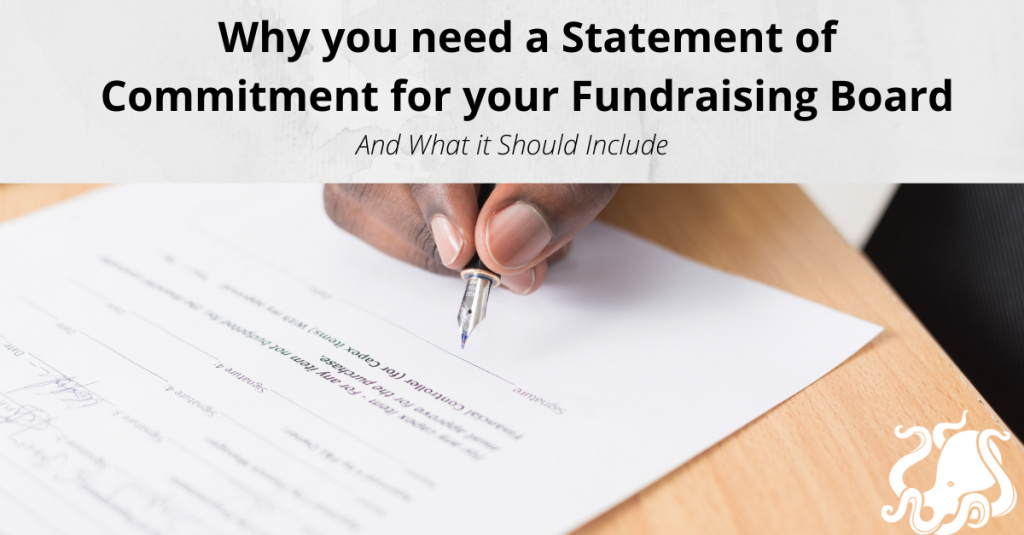
Does your nonprofit currently use a Statement of Commitment for your fundraising board members? If not, it’s time to introduce the idea of this brief, but important document to your governance or executive committee.
A board member Statement of Commitment (or agreement form) is a promise made by an incoming member when agreeing to serve on a nonprofit board. This document is also a way to approach the recruitment of new members in a transparent way so that all parties understand and agree to the general expectations. Keep in mind that there’s nothing legal about this – it’s simply an internal document.
Why use one?
- Most nonprofit boards are skewed when it comes to how board members spend their time. Most spend too much time on governance, events, or administrative tasks and too little time on fundraising. To address this, a Statement of Commitment can make clear what the board’s priorities need to be.
- This document clarifies the role of all (but particularly incoming) board members and removes all ambiguity as to what the expectations will be.
- Helps you to recruit the “right” board members – those with a comfort level and focus on fundraising
What should it look like?
- Keep it simple. The best statements or agreements are just one page long and include only high-level information.
- This may seem obvious but keep the focus on fundraising as the primary responsibility of the board member and state this in the document. Again, your goal is transparency and clarity.
- Make sure your tone reflects the values of your organization and keep the language positive.
- Outline “give or get” expectations of each board member.
- Consider adding a line about each board member bringing at least one major gift or planned gift suspect/prospect to the organization each year.
- Set expectations of attendance at board meetings and events.
- Mention that during times of a capital or comprehensive campaign, board members will be expected to participate at a leadership level.
- Have signature lines for the incoming board member as well as the Chief Executive
Other tips:
- At the end of someone’s term, have your governance or executive committee review the board member’s performance based on what is outlined in the Statement of Commitment.
- Present the Statement of Commitment when you are meeting a prospective board member. Don’t ask that individual to sign the form just yet but show them the agreement so that they are clear on expectations and priorities from the start.
- Using this document removes the awkwardness and timidity that many nonprofit staff members feel when approaching board members about fundraising. Of course, you appreciate board member’s other attributes but their ability to focus on fundraising (both with personal gifts and, just as importantly, with cultivating and soliciting others) needs to be the primary focus.
- Delete names of unengaged or inactive contacts. Come up with a time frame that you feel is safe to consider a constituent unengaged – maybe 3 years, maybe 5 years, depending upon your organization. You can keep these names in a spreadsheet elsewhere but save your database for active constituents. Note: this doesn’t apply to past donors, just prospects or constituents that have never given.




About The Author: WPEditor
More posts by WPEditor